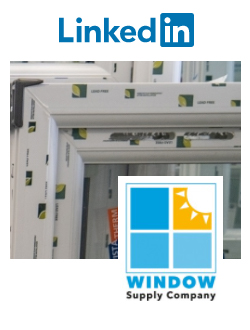A Guide to Condensation
Due to recent innovations in the efficiency of double and triple glazing, along with updated requirements of building regulations and the lowering of carbon emissions, certain weather conditions may allow the formation of external condensation on energy efficient windows and doors. This is a natural phenomenon and a clear indication that the window or door is preventing heat loss from properties. Further information can be found in this blog.
What is condensation?
Condensation is the point at which vapour turns to liquid and is defined as the physical process by which a gas or vapour changes into a liquid. If the temperature of an object (e.g. grass, metal, glass) falls below what is known as the ‘Dew Point’ temperature for a given
relative humidity of the surrounding air, water vapour from the atmosphere condenses into water droplets on its surface.
This ‘Dew Point’ varies according to the amount of water in the atmosphere and air temperature (known as relative humidity). In humid conditions condensation occurs at higher temperatures. In cold conditions condensation occurs despite relatively low humidity.
With regard to windows and doors, it is the difference in temperature between the internal and external environment, and the glass, that causes condensation to form.
How double or triple glazing helps
Double or triple glazing is an insulator, designed to reduce the loss of heat by conduction from the inside to the outside of the building. Current Building Regulations specify that all new or replacement windows must meet a minimum performance criteria. The requirement can only be met by the installation of energy efficient windows and doors.
The location of condensation on the glass
When attempting to reduce the degree of condensation it is important to note on which surface of the glass it forms; its location indicates the cause, and so points to the solution.
Externally
Condensation forms on the outside surface of glass when its temperature drops below the outdoor dew point temperature. The new generation of thermally efficient double and triple glazed windows allow little or no heat through to warm up the outer pane. This creates the condition which allows condensation to form on the outside surface of the outer pane under certain weather conditions. This is strong evidence that heat is not escaping from your house through the window.
Internally
Condensation on the room side surface of the inner glass means that the temperature of the glass surface is too low given the water vapour content of the atmosphere in the room. This is most likely to occur on the surface of single glazed windows but can happen on double or triple glazed windows if the room isn't heated and adequately ventilated.
Within the cavity
Condensation within the cavity of a hermetically sealed double glazed unit or Insulating Glass Unit (IGU) denotes a failure of the seal. Where the double glazing is achieved by the installation of secondary glazing, condensation on the cavity surface of the outer glass generally (but not invariably) indicates leakage of moist air from the room into the cavity.
